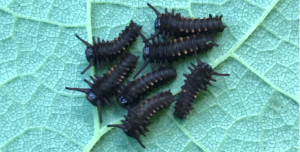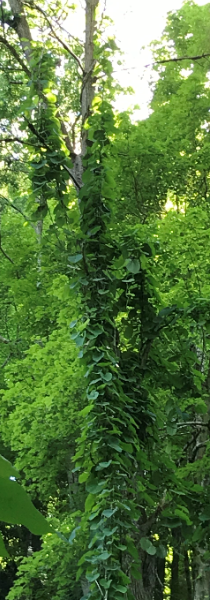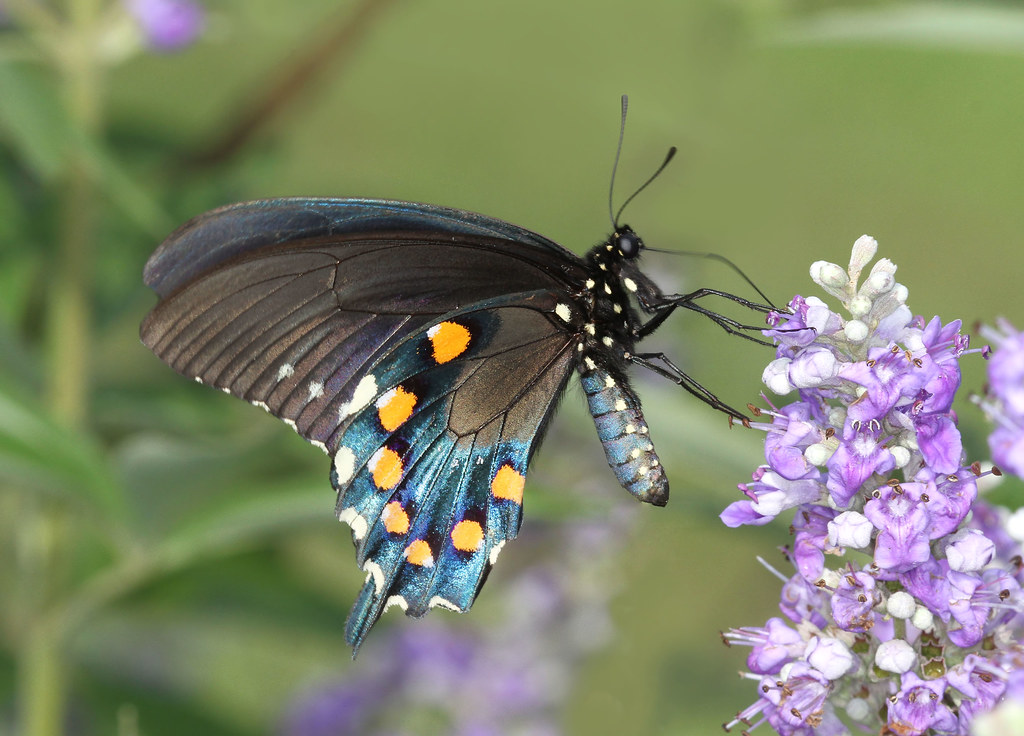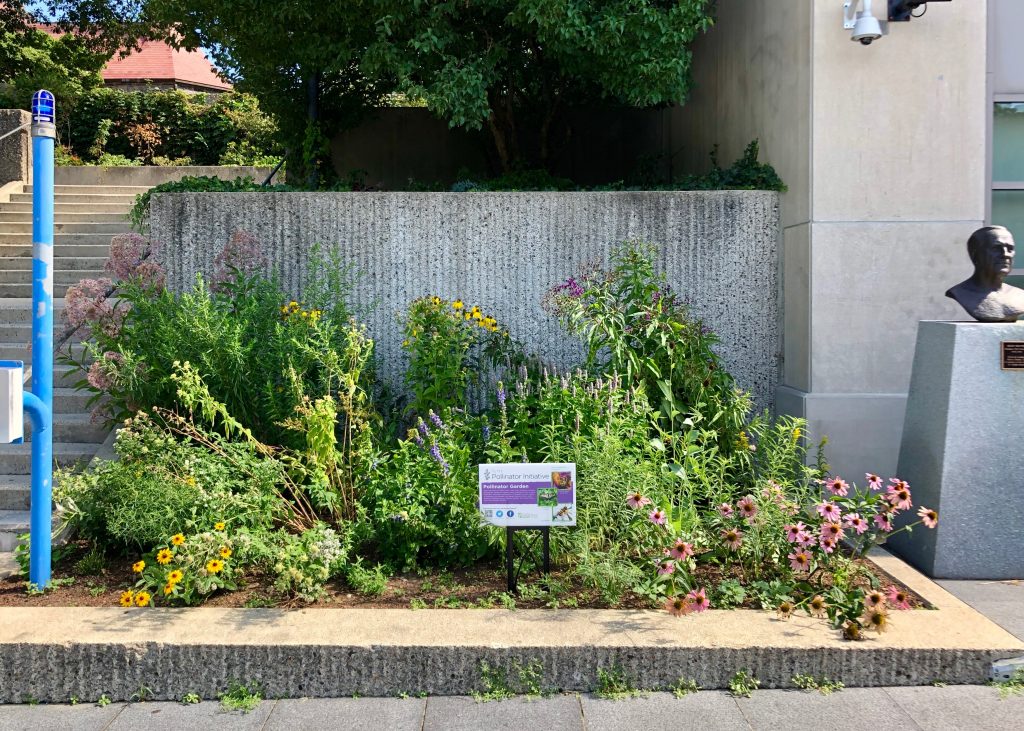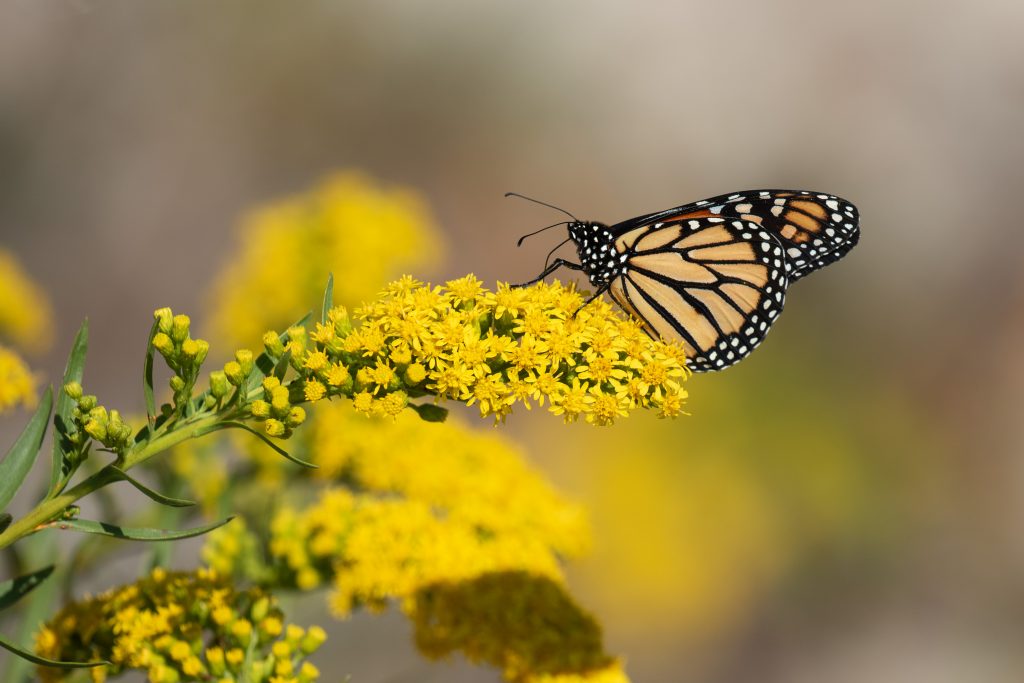Don’t be fooled by extreme cuteness: bunnies are every pollinator gardener’s nightmare. You spend precious time and money planting a native garden to feed pollinators, only to end up feeding bunnies instead. In the TPI gardens at Tufts, we face our fair share of bunny herbivory. But, we’ve also learned a few strategies for combating hungry rabbits, including a list of which plants rabbits avoid entirely. Read on to learn our tips for how to bunny-proof your pollinator garden!
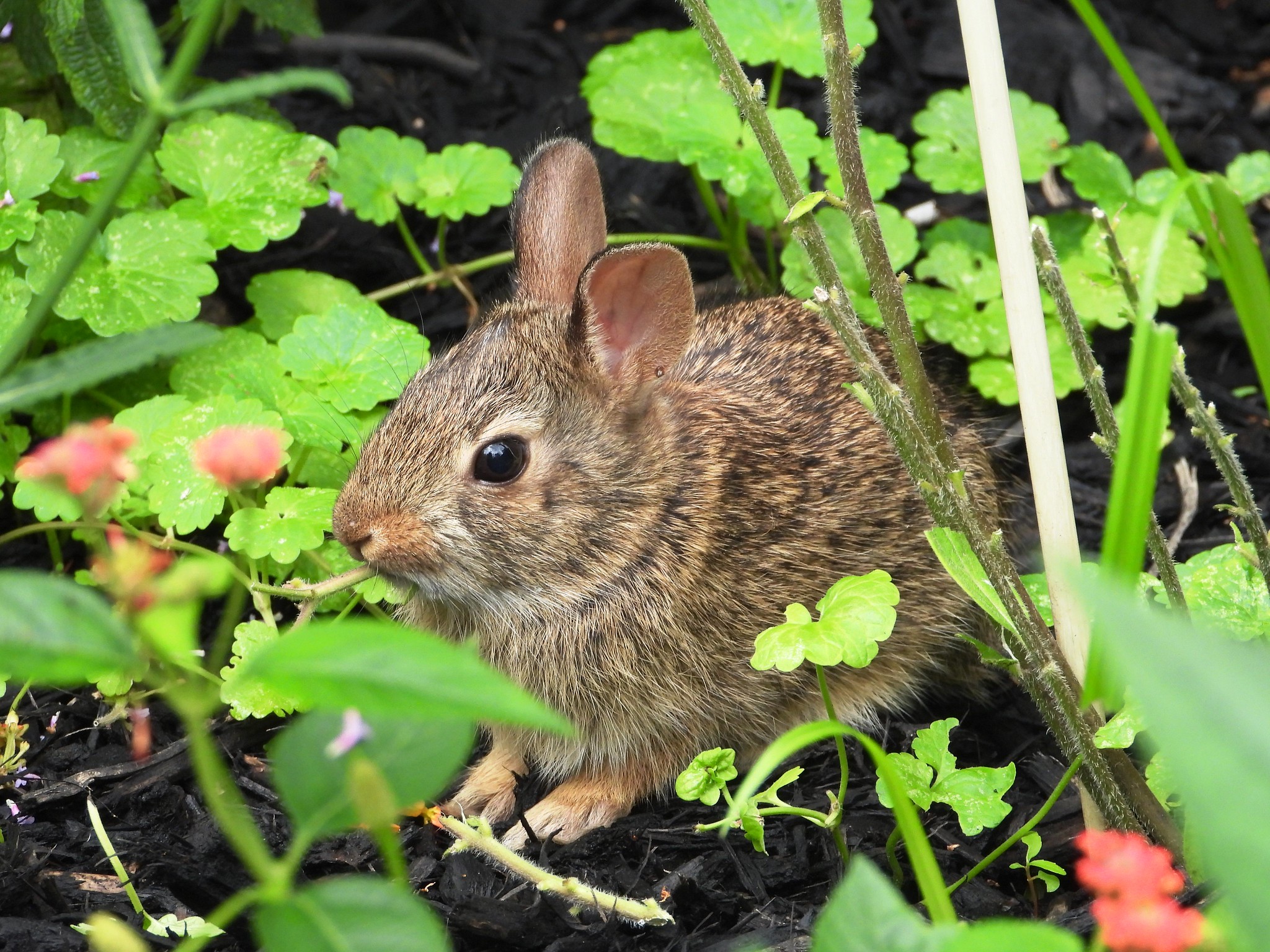
1. Prioritize rabbit-proof plants
The single best way to avoid having your garden munched on by rabbits is to grow plants that rabbits do not like to eat. Over the past three years, we have kept track of the fates of over 30 different species of native plants in our gardens. Although many of them, in one year or another, have been munched on by rabbits, some species have been avoided entirely. Here is the list of plants from our garden that have never been eaten by rabbits:
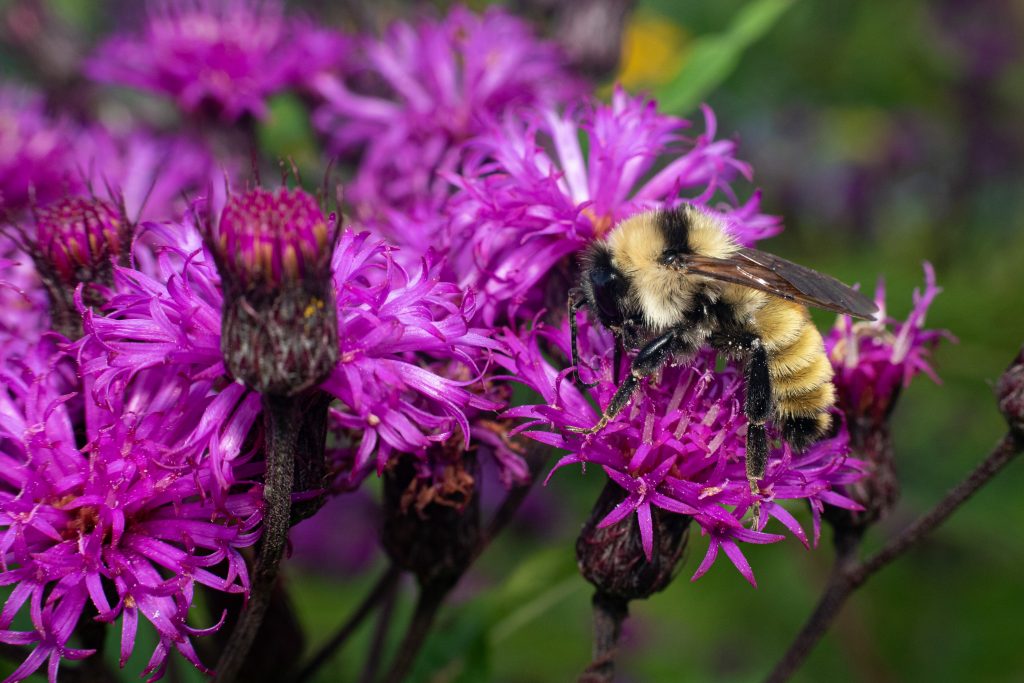
- Mountain mint (Pycnanthemum spp., e.g. P. virginianum, P. tenuifolium)
- Anise hyssop (Agastache foeniculum)
- Bee balm (Monarda spp., e.g. M. bergamot, M. punctata)
- New York ironweed (Vernonia noveboracensis)
- Foxglove beardtongue (Penstemon digitalis)
- Golden Alexander’s (Zizia aurea)
- Goldenrods (Solidago spp. e.g. S. sempervirens)
- Wild senna (Senna hebecarpa)
- Joe-pye weed (Eutrochium maculatum)
- Boneset (Eupatorium perfoliatum)
- Cutleaf coneflower (Rudbeckia laciniata)
- Sneezeweed (Helenium autumnale)
- Partridge pea (Chamaecrista fasciculata)
- (most herbs*)
2. Avoid tasty plants
In a similar vein, a great way to make your garden bunny-proof is to not grow the plants that rabbits love. Here’s a list of plants from our gardens that fed more rabbits than pollinators, and which should be planted with caution:
- Symphyotrichum spp.asters (S. novae-angliae, S. laeve, S. prenanthoides)
- Blazing star (Liatris spicata, L. scariosa)
- Wild false indigo (Baptisia spp.)
- Cardinal flower (Lobelia cardinalis)
- Swamp milkweed (Asclepias incarnata)
- Purple coneflower (Echinacea purpurea)
- Cup-plant (Silphium perfoliatum)
- Black-eyed susan (Rudbeckia hirta)
- Sunflowers (Helianthus spp.)
- red columbine (Aquilegia canadense)
- Culver’s root (Veronicastrum virginicum) — not always eaten
3. Create an unappetizing display by mixing plants
We’ve found that tasty plants are often avoided when planted among distasteful plants, so try to mix and match. This means your tasty asters stand more of a chance if mixed in with lots of distasteful mountain mints, ironweed, and goldenrods. Pollinators appreciate the diversity too—the more diverse your garden, the more kinds of pollinators you will attract! And, from an aesthetic perspective, inter-mixing plants means that any rabbit herbivory that does occur will be far less noticeable.
4. Protect vulnerable plants
Rabbits love eating the youngest plants. Often, young leaves have not yet accumulated as many distasteful chemical compounds as older leaves. In our gardens, for example, young emergent sunflowers (Helianthus annuus) and cup-plant (Silphium perfoliatum) are frequently nibbled as seedlings, but are left untouched when they are larger. By protecting young plants with fencing, your garden will have the blooms you want later in the season!
The same applies to woody plants and saplings, but for a different reason. Young wood is soft, sweet, and easily chewed by rabbits and rodents. Be sure to fence young saplings in their first years–especially over winter–to prevent girdling and other herbivory that can kill your long-term investment.
5. Use your local knowledge
Keep in mind that our lists of plants (both enjoyed and rejected) reflect the tastes and preferences of rabbits in urban Massachusetts, as well as the context of our campus garden. So, to make your garden as bunny-proof as possible, learn from experience. If bunnies in your neighborhood never touch the wood asters and swamp milkweed in your garden, then by all means, plant, plant, plant. Conversely, if the bunnies in your neighborhood have a penchant for anise hyssop, then definitely don’t keep planting while expecting a different result.
Do you have tips for thwarting bunnies in your pollinator gardens? Drop us a comment!
*Although we advocate for growing native, you can add fragrant, non-native herbs like lavender, rosemary, thyme, borage, and oregano to make your garden even more bunny-proof. The nasty compounds in most mint-family plants are quite distasteful to bunnies.


